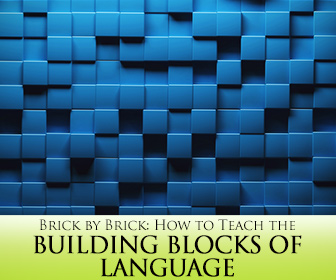4 Awesome Ways to Make Lexical Chunks Work with Kids


After all, words combine to make sentences which convey meaning. If a person does not understand a particular word, they may struggle to understand the overall meaning of a sentence. And while words do covey meaning, they may not be the best place to start when it comes to teaching English. Taking groups of words, or lexical units, may be a more efficient and productive way to teach language – groups of words at a time.

A lexical unit, by definition, is the basic unit of meaning in a language. How does that theory play out in the ESL classroom? It’s really quite simple. Lexical units are the smallest unit of meaning. Sometimes they are a single word. Sometimes they are a phrase. Other times they are idioms or parts of words. Basically, anything that contains a basic unit of meaning (before it is combined with another lexical unit) is a lexical unit. Each of the following, though they vary in length, is a lexical unit.
Though they fall throughout the spectrum from one syllable to multiple words, each of these is a lexical unit. Each phrase has one basic meaning. The number of words that make up each phrase is irrelevant.

Some would still ask why bother teaching lexical phrases. If most of them are made up of single words, why not start there? The reason lies in how the brain processes language. Translating phrases and sentences word for word does not always produce understanding. Idioms are perhaps the clearest example. When translated word for word, they often make no sense whatsoever to speakers of other languages. But when translated phrase by phrase, they make sense. The reason is simple. Whether they are one letter or several words, lexical units make up language. Language is the collection of these lexical units (also known as the lexicon). So teaching in these units of meaning is actually more efficient than teaching word by word.
So now that you see the value in teaching lexical units, how exactly does one tackle it in the classroom? Here are some suggestions for simple activities you can do with your students to raise awareness of and practice using lexical units.

Think about lexical units the next time you introduce a vocabulary unit to your class. Rather than teaching word by vocabulary word, teach lexical phrases to your students. Use collocations and phrases. Challenge them to write a definition of a group of words rather than a single word, or have them translate a lexical phrase from English into one word of their native language. When you put emphasis on groups of words rather than translating or defining each word of a lexical phrase, your students will learn the phrases and use them.
When you use authentic English texts with your students, they are sure to see lexical phrases peppered throughout. Challenge your students to go on a lexical phrase scavenger hunt in an authentic written passage. Divide students into groups of two or three and see how many phrases your students can find in a given passage from the newspaper or a text book. Once all the groups are finished, come back together and make a comprehensive class list of the lexical phrases they found. Then challenge your students to use those phrases in class in the following days. Recognize any students who successfully use the lexical phrases in their speech.
Make room in your class time for small talk. Many lexical units are common in small talk. Make a game of practicing these lexical units with your students. Give each student a card which has a lexical phrase written on it. Then, let students mingle and talk with one another. Their goal during this game will be to use their phrase in their small talk conversation.
Using the same phrases from your small talk exercise, have two people come in front of the class to role play a small talk conversation. Throw out a challenge to see who can use the most lexical phrases in the conversation without repetition. If you like, create teams and award points to each winner in the faceoff.
Often times, when you diagram sentences syntactically (not necessarily how you did in your ninth grade English class) you will see what words naturally group together. If you are working with intermediate or advanced students, give them a go at syntactic diagraming and see if the picture (sentence tree) helps them understand the concept of lexical phrases.
Give your students some practice hearing lexical phrases while bringing some fresh tunes into the classroom. Since lexical phrases are often found in songs, create a fill in the blank listening exercise for your students with one of your favorite songs. Leaving blanks for lexical phrases rather than individual words, challenge your students to listen for the phrase that correctly completes the lyrics. After listening two or three times, talk about the phrases they heard and how to use them.
Give your students an example of lexical phrases in your own speech. Challenge your students to listen for lexical phrases as you talk to them and then use those same lexical phrases in their own speech. To do this, take a few minutes to tell your students about a topic of your choice. You might talk about a vacation you would like to take, for example. As you tell them about your topic, have them write down any phrases they think they could use to talk about their own ideal vacation. You may want to give groups of students a chance to compare what they wrote down. Then have students share with the class their own ideal vacation using some of the same lexical phrases you used when talking to them.
Ultimately, the most effective way to teach lexical phrases to your students is to continually reinforce them from the front of the classroom. Human nature is to forget much of what we learn in a very short time. When you stress lexical phrases to your students and reinforce their use in class, your students will remember more and use them properly in their speech.